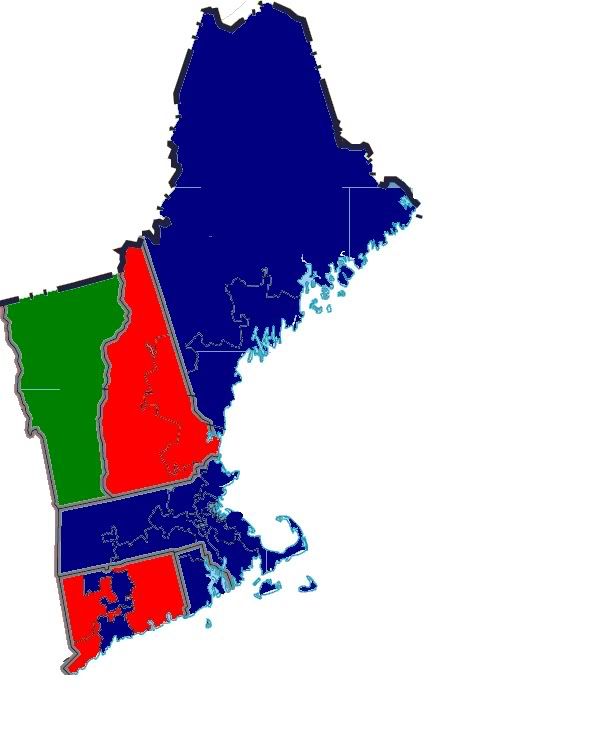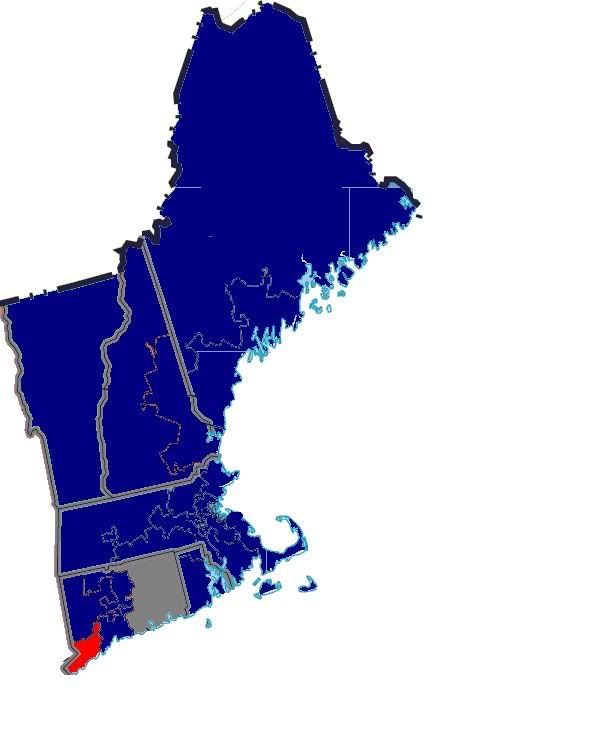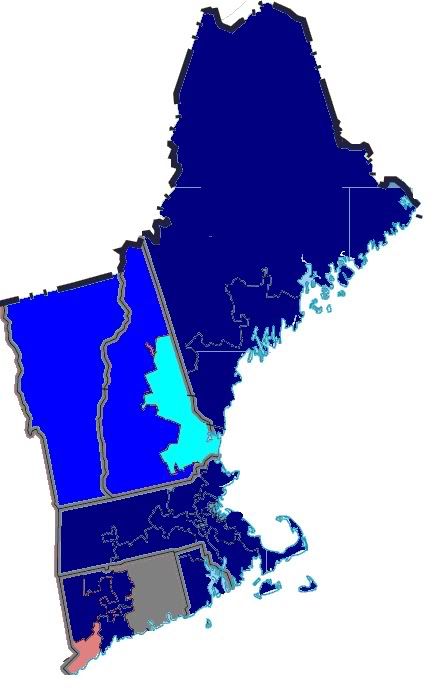Rhode Island doesn’t offer much for redistricting fans to sink their teeth into: it has two districts that are about equally blue, the Dems control the redistricting trifecta, and the disparity between the two districts, while not New Hampshire-close, requires only minimal boundary-shifting. Rhode Island’s target is a tiny 526,284 (only up from 524K in 2000… Rhode Island had the smallest growth, percentage-wise, of any state over the decade, putting it 2nd overall behind only Michigan, which actually lost population). If this continues, there’s the distinct possibility we could see Rhode Island reduced to one House seat come 2020. Also worth noting: Rhode Island had a lot of Hispanic growth over the decade, not quite on par with the Southwest but high for the Northeast; it went from 8.5% Hispanic to 12.4%, and Providence moved to a Hispanic plurality.
| District | Rep. | Population | Deviation |
|---|---|---|---|
| RI-01 | Cicilline (D) | 519,021 | (7,263) |
| RI-02 | Langevin (D) | 533,546 | 7,263 |
| Total: | 1,052,567 |
South Carolina is gaining one seat to move from six to seven; its new target based on 7 seats is 660,766 (it was 668K in 2000, so every district gained significantly over the decade). With the GOP holding the trifecta and much of the growth seeming to come among white retirees, look for the creation of one more Republican-friendly seat… with one possible wild card, that the Obama DOJ might weigh in and push for a second African-American VRA seat (theoretically possible if terribly ugly, as SSP’s crack team of freelance mapmakers have shown here). The biggest growth has come in the coastal Low Country, rather than the fiercely evangelical uplands; I’d expect Charleston and Myrtle Beach, both part of SC-01 for now, to wind up each anchoring their own districts.
| District | Rep. | Population | Deviation |
|---|---|---|---|
| SC-01 | Scott (R) | 856,956 | 196,190 |
| SC-02 | Wilson (R) | 825,324 | 164,558 |
| SC-03 | Duncan (R) | 722,675 | 61,909 |
| SC-04 | Gowdy (R) | 770,226 | 109,460 |
| SC-05 | Mulvaney (R) | 767,773 | 107,007 |
| SC-06 | Clyburn (D) | 682,410 | 21,644 |
| Total: | 4,625,364 |
West Virginia is staying at three seats for now, although it might be headed for two seats in 2020, given its slow growth and low targets; its target is 617,665, only up from 603K in 2000. The 3rd, in coal country in the southern part of the state, is losing population (though not as fast as one might suspect); the 2nd needs to shed an amount equivalent to what the 3rd needs to gain, leaving the 1st pretty stable. Much of the state’s growth is in the far east tip of the Panhandle (in the 2nd), especially Berkeley County, which serves as Washington DC’s furthest-out exurbs. Dave Wasserman, who seems to get all the good redistricting-related gossip, says that while the obvious solution (moving Mason County from the 2nd to the 3rd, and calling it a wrap) still seems likely, the Dems who control the redistricting trifecta might want to cobble together a slightly Dem-friendlier 1st along the state’s northern boundary that includes both Morgantown and the Panhandle exurbs (the only counties in the state that are getting bluer).
| District | Rep. | Population | Deviation |
|---|---|---|---|
| WV-01 | McKinley (R) | 615,991 | (1,674) |
| WV-02 | Capito (R) | 648,186 | 30,521 |
| WV-03 | Rahall (D) | 588,817 | (28,848) |
| Total: | 1,852,994 |


